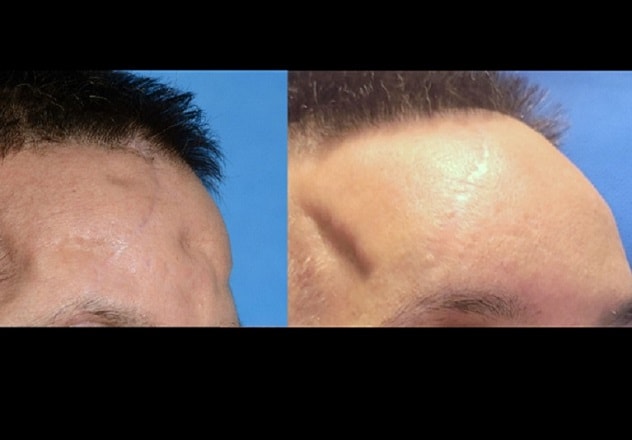June 20, 2024
Mayo Clinic craniofacial surgeons routinely work alongside neurosurgeons to maintain quality of life for people undergoing brain tumor resections. "Collaboration with craniofacial specialists helps us to lower the chance of infection and to minimize any disfigurement," says Bernard R. Bendok, M.D., chair of Neurosurgery at Mayo Clinic in Phoenix/Scottsdale, Arizona.
"Most of our patients don't even look as though they had surgery," says Salvatore C. Lettieri, M.D., a craniofacial and reconstructive surgeon at Mayo Clinic's campus in Arizona. "The operative time ends up being the same or even less than procedures performed without a craniofacial surgeon, and the patient satisfaction is much higher."
Craniofacial surgeons often perform the opening and closing incisions in tumor resections, using specialized techniques gained from treating people with head trauma or congenital craniofacial anomalies. Craniofacial surgeons also are involved in secondary reconstructions following tumor resections.
"We're in a unique position at Mayo Clinic," Dr. Lettieri says. "As a multispecialty center, we have the services available to work in concert for increased patient satisfaction and improved outcomes."
Expert input
 Craniofacial enhancement
Craniofacial enhancement
On the left, photograph after brain tumor resection shows deep grooves in the forehead. On the right, photograph after craniofacial surgery demonstrates improvement.
Guidance from craniofacial specialists has changed aspects of brain tumor surgery at Mayo Clinic. One particular focus is the opening incision for resections of tumors in the eye or anterior skull base.
"The opening is important for the closing — the outcomes end up better if you work with that anticipation," Dr. Lettieri says. "For example, there are some maneuvers we can use when we must violate the frontal sinus to get access to the anterior skull base."
Another change is delaying cranioplasties until three months after tumor resections. "We want the tissue to heal so there's less bleeding during the cranioplasty," Dr. Lettieri says. "We also err on the side of putting tissue expanders in to stretch the scalp. Then, if an infection develops, we have enough tissue to overcome the infected tissue."
Incisions are made not directly over a craniotomy but slightly behind. That provides a flap of skin that can be sutured over the craniotomy — like a manhole cover — to enhance cosmetic results and optimize healing.
One of a craniofacial surgeon's roles is to help manage any complications, which are often the result of previous procedures. Mayo Clinic specialists perform thorough evaluations of patients previously treated elsewhere.
"Some trends in how the original surgery was performed may increase the likelihood of various problems. We review those issues and then avoid them on a primary basis with our patients at Mayo Clinic," Dr. Lettieri says. "As a result, our wound infection and cranioplasty complication rates are much lower compared with the accepted norms."
To minimize grooves that individuals might feel in their skulls after surgery, Mayo Clinic surgeons fill those grooves during surgery with osteoinductive sodium monophosphate cement. "Over time, the cement turns into bone, so patients can't feel grooves anymore," Dr. Lettieri says.
As a multispecialty center, Mayo Clinic is committed to treating the whole patient. "It's scary for people to have these neurosurgical procedures. Craniofacial surgeons are able to alleviate some of their worries about quality of life after the surgery," Dr. Lettieri says. "We garner the strengths of all the specialties — that's the Mayo Clinic model in a nutshell."
For more information
Refer a patient to Mayo Clinic.